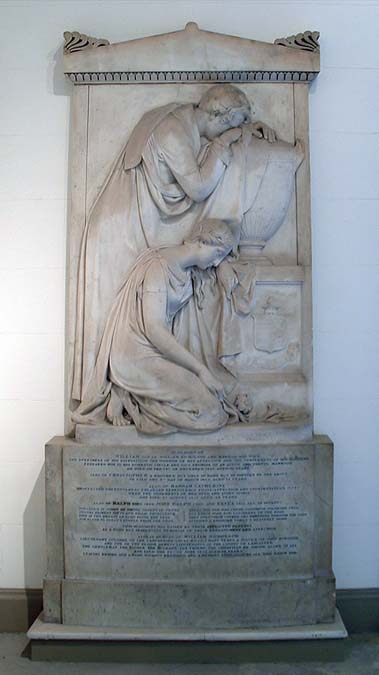|
|
The
Nicholson Family
Sculptor: Sir Francis Chantrey (1781-J841)
Inv. no. 9848
Chantrey was
the most popular and successful of 19th-century British sculptors,
admired both for his portrait busts and his monuments. He believed in
studying directly from nature rather than from ancient Greek and Roman
sculpture, and his treatment of flesh, hair and clothing is often
strikingly naturalistic. William Nicholson (d.1832) lived at Springfield
House in Everton, at a time when that district was still an area of
prosperous mansions and villas. He is shown leaning against an urn,
mourning the death of his six children. The suggestion of deep sorrow in
the man's pose is made more touching by the fact that his face is
hidden, but in this Chantrey was perhaps making a virtue of necessity:
Nicholson himself died in June 1832, only four months after ordering his
children's monument, and the sculptor may well have missed the
opportunity to record his features from life. At first sight the
kneeling female figure might be taken for William's wife, Hannah, but in
view of her youth and her idealised features she is more probably a
symbolic representation of "Grief" or "Resignation". Chantrey reproduced
exactly the same figure on his monument to Sir Richard Bickerton (also
dated 1834) in Bath Abbey; such duplication was not an uncommon practice
at this date. Here the figure holds a broken lily, a popular emblem on
19th-century monuments, signifying youthful innocence cut off in the
bloom of life.
|
|
